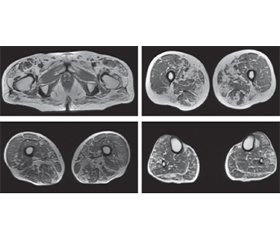Международный неврологический журнал Том 20, №6, 2024
Вернуться к номеру
Клінічний випадок хвороби Корі — Форбса з пізнім початком у білого дорослого європейця
Авторы: H.V. Palahuta (1, 2), O.Ye. Fartushna (3), M.A. Trishchynska (4), V.O. Svystilnyk (5), Ya.V. Dmytrenko (2), (6)
(1) - Uzhhorod Regional Clinical Center of Neurosurgery and Neurology, Uzhhorod, Ukraine
(2) - Uzhhorod National University, Uzhhorod, Ukraine
(3) - Ukrainian Military Medical Academy, Kyiv, Ukraine
(4) - Shupyk National Healthcare University of Ukraine, Kyiv, Ukraine
(5) - Bogomolets National Medical University, Kyiv, Ukraine
(6) - Clinical Hospital of Planned Treatment, Separated Subdivision of the Communal Non-Commercial Enterprise “Uzhhorod City Multidisciplinary Clinical Hospital” of the Uzhhorod City Council, Uzhhorod, Ukraine
Рубрики: Неврология
Разделы: Справочник специалиста
Версия для печати
Хвороба Корі — Форбса, також відома як глікогеноз або хвороба накопичення глікогену III типу (ХНГ ІІІ), є рідкісним генетичним захворюванням, що характеризується порушенням метаболізму глікогену та проявляється різним ступенем ураження печінки, серця й скелетних м’язів. ХНГ IIIa є найбільш поширеним підтипом (~ 85 % пацієнтів) і характеризується ураженням печінки та м’язів. ХНГ IIIb, що вражає лише печінку, зустрічається приблизно в 15 % випадків. Існують також типи IIIc та ІІІd, але їх вважають достатньо рідкісними станами, і ці пацієнти клінічно не відрізняються від осіб із ХНГ IIIa. У новонароджених та маленьких дітей ураження печінки проявляється гепатомегалією, затримкою росту, кетотичною гіпоглікемією натще, гіперліпідемією та підвищеними рівнями печінкових ферментів. У підлітковому і дорослому віці ці симптоми стають менш вираженими. У багатьох людей спостерігаються ураження серця, що супроводжуються серцевою гіпертрофією або кардіоміопатією. Міопатія, яка призводить до м’язової слабкості, може бути помітною вже в дитячому віці та повільно прогресує, стаючи більш очевидною на третьому або четвертому десятиліттях життя. Прогноз в цілому сприятливий, але може значно варіюватися від людини до людини. Лікування полягає в дотриманні дієти, уникненні голодування, гіпоглікемії та міоглобінурійних нападів, що в цих пацієнтів зустрічаються дуже рідко. Довгострокові наслідки, як-от ураження м’язів і серця, фіброз або цироз печінки й гепатоцелюлярна карцинома, можуть суттєво впливати на прогноз та якість життя. Розуміння клінічної картини цього захворювання може сприяти ранній діагностиці, що покращить якість життя пацієнтів, а своєчасна терапія має ключове значення щодо запобігання ускладненням та кращого прогнозу. Однак публікацій про ХНГ III із пізнім початком клінічних симптомів мало.
Cory-Forbes disease, also known as glycogen storage disease type III (GSD III), is a rare genetic disorder characterized by impaired glycogen metabolism and manifested by varying degrees of damage to the liver, heart, and skeletal muscles. GSD IIIa is the most common subtype, occurring in approximately 85 % of patients and characterized by both liver and muscle involvement. GSD IIIb, which affects only the liver, occurs in about 15 % of cases. Types IIIc and IIId also exist but are considered fairly rare conditions and these patients are clinically indistinguishable from those with GSD IIIa. In neonates and young children, liver damage manifests as hepatomegaly and growth retardation, as well as fasting ketotic hypoglycemia, hyperlipidemia, and elevated liver enzymes. In adolescence and adulthood, these symptoms become less pronounced. Many people have heart lesions accompanied by cardiac hypertrophy or cardiomyopathy. Myopathy, which leads to muscle weakness, can be noticeable as early as childhood and progresses slowly, becoming more apparent in the third or fourth decade of life. The prognosis is generally favorable but can vary greatly from person to person. Treatment consists of diet, avoidance of fasting, hypoglycemia, and myoglobinuric attacks, which are very rare in these patients. Long-term sequelae, such as muscle and heart damage, liver fibrosis or cirrhosis, and hepatocellular carcinoma, can significantly affect prognosis and quality of life. Understanding the clinical picture of this disease can contribute to early diagnosis, which will improve the quality of life of patients, and timely therapy is key to preventing complications and improving prognosis. However, there are limited publications on the late onset of clinical symptoms of GSD III.
метаболічна міопатія; хвороба Корі — Форбса; хвороба накопичення глікогену; генетичні захворювання
metabolic myopathy; Cori-Forbes disease; glycogen storage disease; genetic diseases; case report; GSD III

